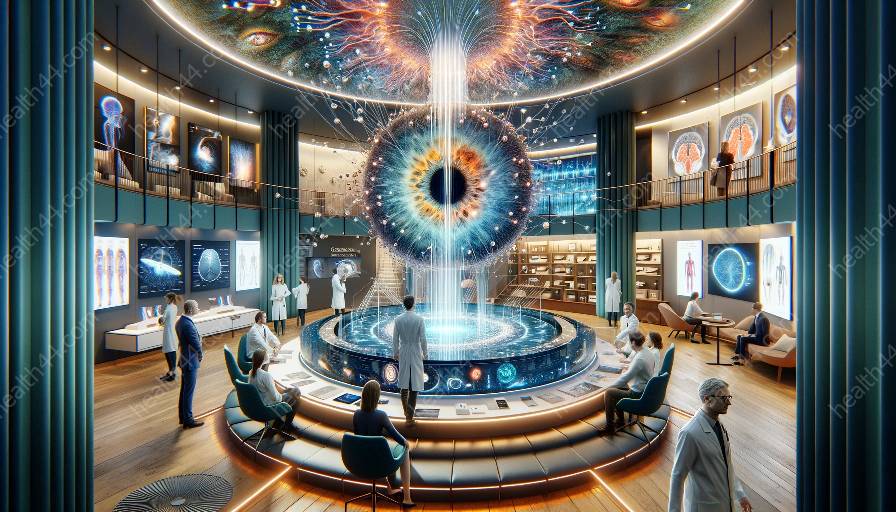The intricate interplay of visual perception and environmental navigation offers insights into how the human visual system interprets and processes the surrounding world. This topic cluster delves into the fascinating connection between visual perception, environmental navigation, and vision rehabilitation, shedding light on the complex mechanisms involved in perceiving and navigating the environment.
Understanding Visual Perception
Visual perception is the process by which the human brain interprets and makes sense of visual information received from the eyes. It involves intricate neural processing that enables individuals to perceive and comprehend the visual world. The human visual system is remarkably adept at detecting and interpreting visual stimuli, allowing individuals to navigate and interact with their environment.
Key aspects of visual perception include depth perception, visual acuity, color perception, motion detection, and object recognition. These elements collectively contribute to an individual's ability to perceive the environment and navigate through it effectively. Visual perception plays a crucial role in facilitating environmental navigation by providing the brain with essential information about the surroundings.
Visual Perception and Brain Processing
The human brain plays a central role in processing visual information to facilitate environmental navigation. Visual perception involves the complex interaction of various brain regions, including the primary visual cortex, visual association areas, and higher-order cognitive centers. These regions work in concert to process and interpret visual input, allowing individuals to make sense of their surroundings.
Furthermore, visual perception extends beyond mere visual sensation, encompassing the cognitive processes that enable individuals to extract meaningful information from the environment. These processes involve attention, memory, and problem-solving skills, all of which contribute to efficient environmental navigation.
The Role of Visual Perception in Environmental Navigation
Effective environmental navigation hinges on the seamless integration of visual perception with other sensory modalities, such as auditory and tactile inputs. Visual perception informs individuals about spatial relationships, environmental landmarks, and potential obstacles, empowering them to navigate the environment with precision and confidence. Moreover, visual perception allows for the interpretation of signs, symbols, and spatial cues that guide individuals during navigation.
From everyday activities such as walking and driving to more complex tasks like wayfinding in unfamiliar environments, visual perception serves as a cornerstone of successful environmental navigation. Individuals rely on their ability to perceive and interpret visual information to plan routes, avoid hazards, and reach their destinations safely.
Challenges in Visual Perception and Environmental Navigation
However, various factors can impede visual perception and impact environmental navigation. Visual impairments, such as low vision or blindness, pose significant challenges to individuals in perceiving and navigating their surroundings. Vision rehabilitation, which encompasses a range of interventions and strategies, aims to enhance visual function and independence for individuals with visual impairments.
Vision Rehabilitation and Environmental Navigation
Vision rehabilitation plays a pivotal role in empowering individuals with visual impairments to navigate the environment effectively. Through specialized training, assistive technologies, and environmental modifications, vision rehabilitation endeavors to maximize individuals' residual vision and develop alternative strategies for environmental navigation.
Moreover, vision rehabilitation professionals work closely with individuals to assess their visual capabilities, provide tailored interventions, and promote adaptive techniques for successful environmental navigation. By addressing the specific needs and challenges associated with visual impairments, vision rehabilitation fosters independence and confidence in negotiating the environment.
Conclusion
Visual perception and environmental navigation are intricately linked, representing a dynamic interplay between the human visual system and the surrounding world. Understanding the mechanisms of visual perception and its role in environmental navigation is crucial for creating inclusive environments and supporting individuals with visual impairments. By exploring the complexities of visual perception and environmental navigation, we gain valuable insights into the remarkable abilities of the human visual system and the impact of vision rehabilitation on enhancing individuals' navigation skills.





















